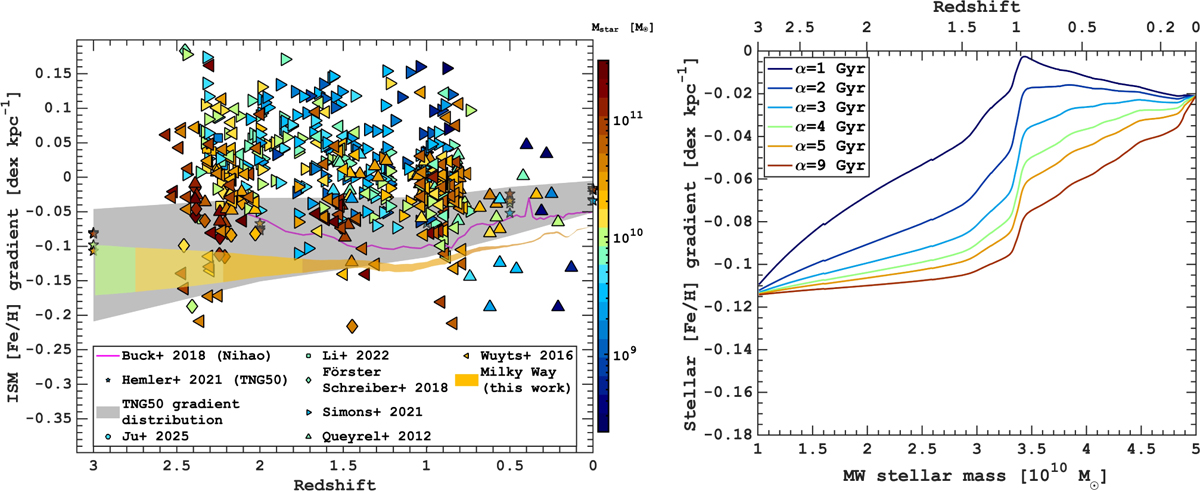Fig. 7

Download original image
Evolution of the mass-metallicity gradient relation in the MW. The left panel shows the evolution of the ISM radial metallicity gradient as a function of the MW stellar mass. The vertical width of the filled area is limited by the birth metallicity gradient uncertainty (see Fig. 5). The color of the filled area corresponds to the MW stellar mass at a given epoch, which was adapted from Snaith et al. (2015). For comparison, we also provide measurements of external galaxies, the barred NIHAO-UHD galaxy (magenta line), and TNG50 (asterisks and the gray area reflect the peak value and the distribution of metallicity gradient from Hemler et al. 2021). The observational data points adapted from Queyrel et al. (2012); Simons et al. (2021); Wuyts et al. (2016); Förster Schreiber et al. (2018); Li et al. (2022); Ju et al. (2025). The right panel provides the evolution of the stellar mass-weighted radial metallicity gradient for different gradient evolution timescales, α (see Section 5.2 for more details). The analysis of the TNG50 galaxies (see Fig. C.5) and the relatively short active phase of stellar radial migration action support the rapid transformation of the mono-age stellar gradient, favoring the MW stellar metallicity gradient evolution with α = 1–2 Gyr.
Current usage metrics show cumulative count of Article Views (full-text article views including HTML views, PDF and ePub downloads, according to the available data) and Abstracts Views on Vision4Press platform.
Data correspond to usage on the plateform after 2015. The current usage metrics is available 48-96 hours after online publication and is updated daily on week days.
Initial download of the metrics may take a while.


